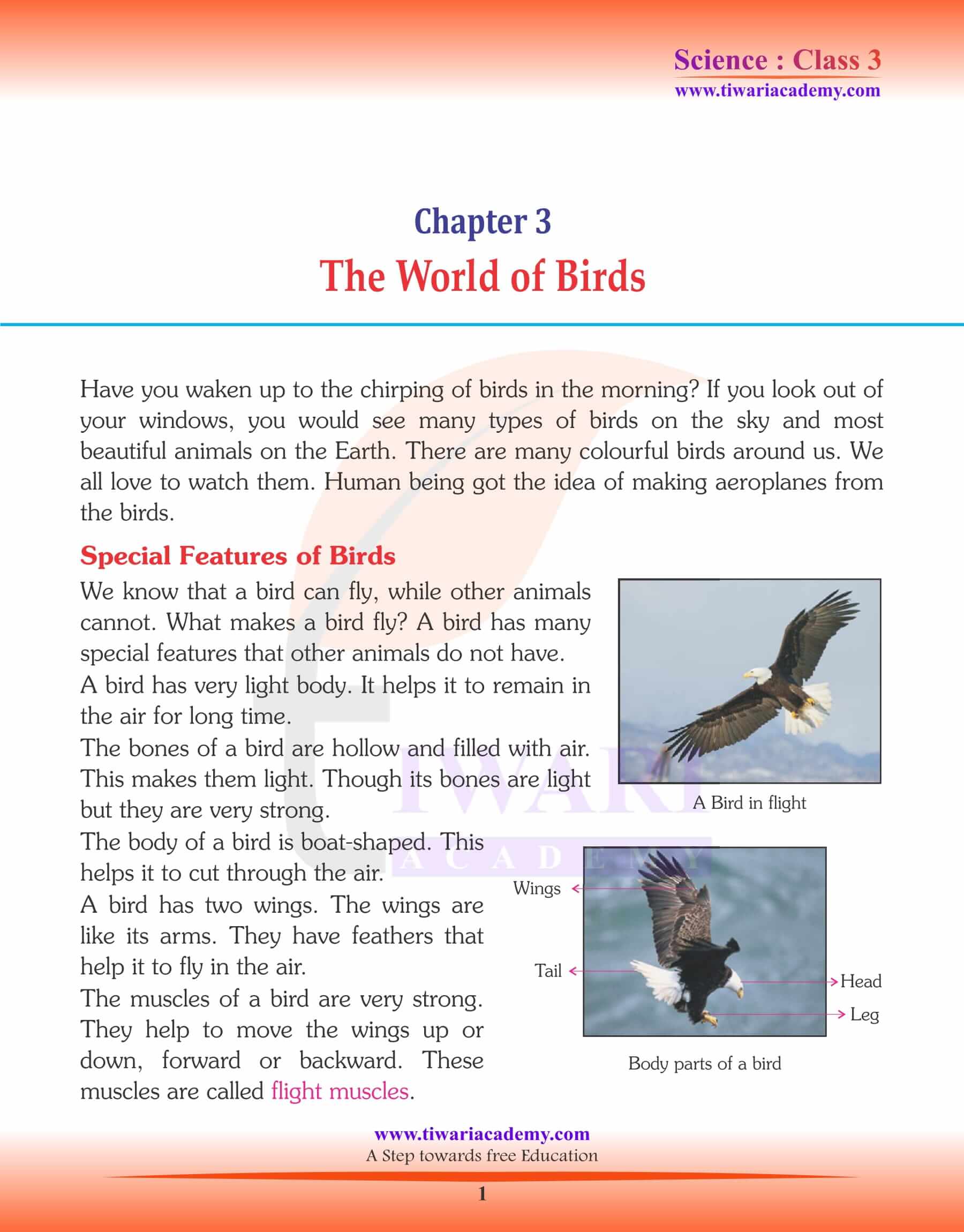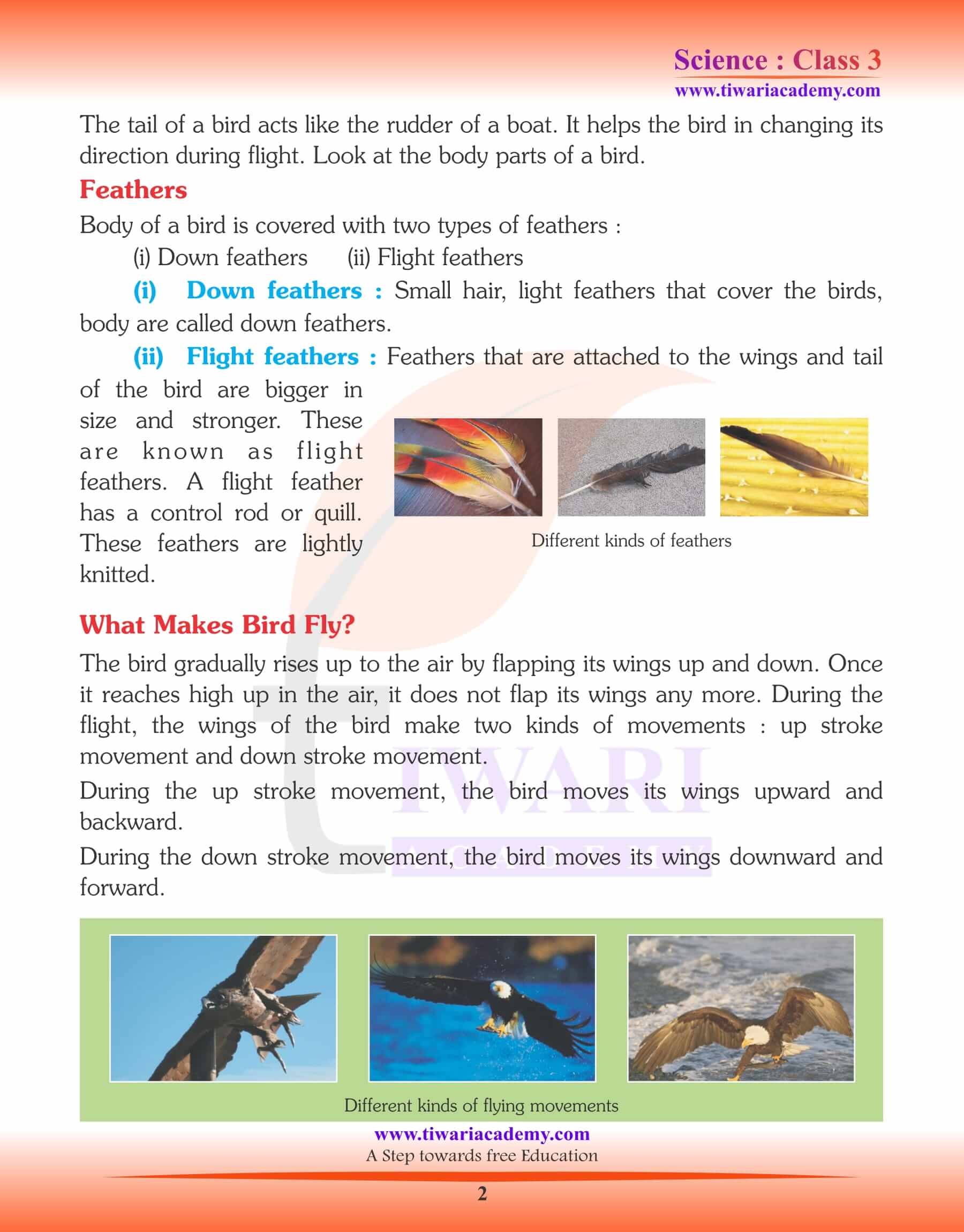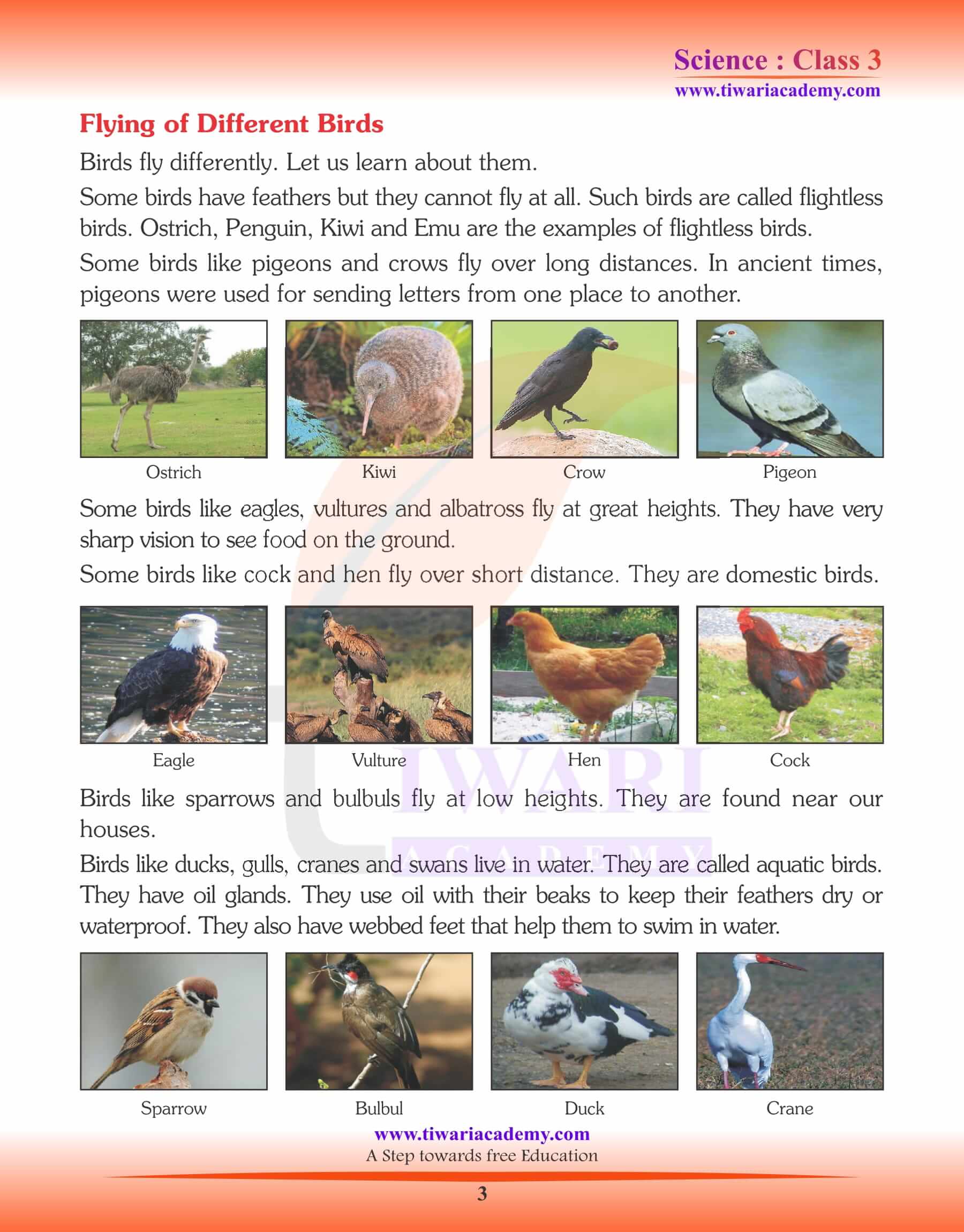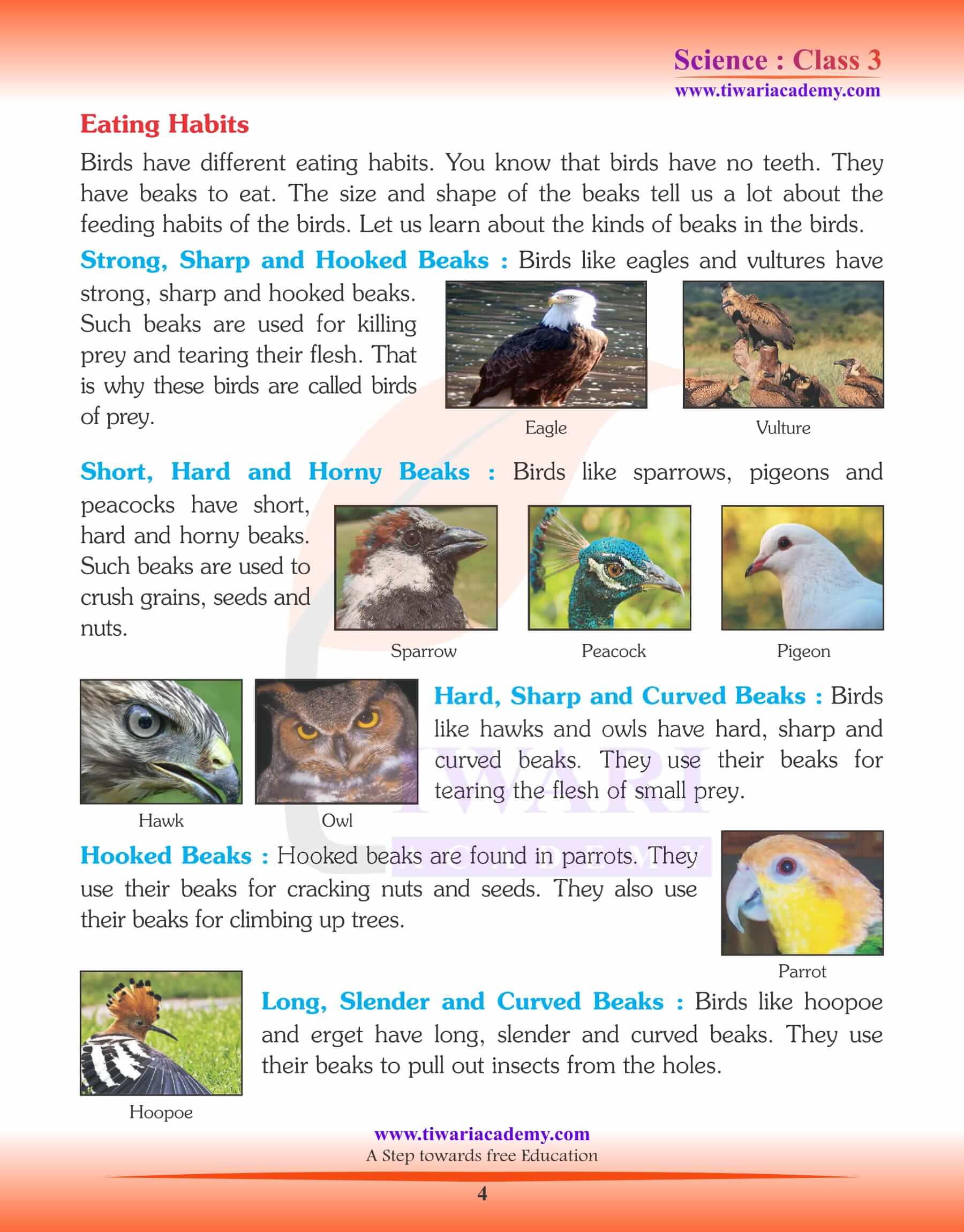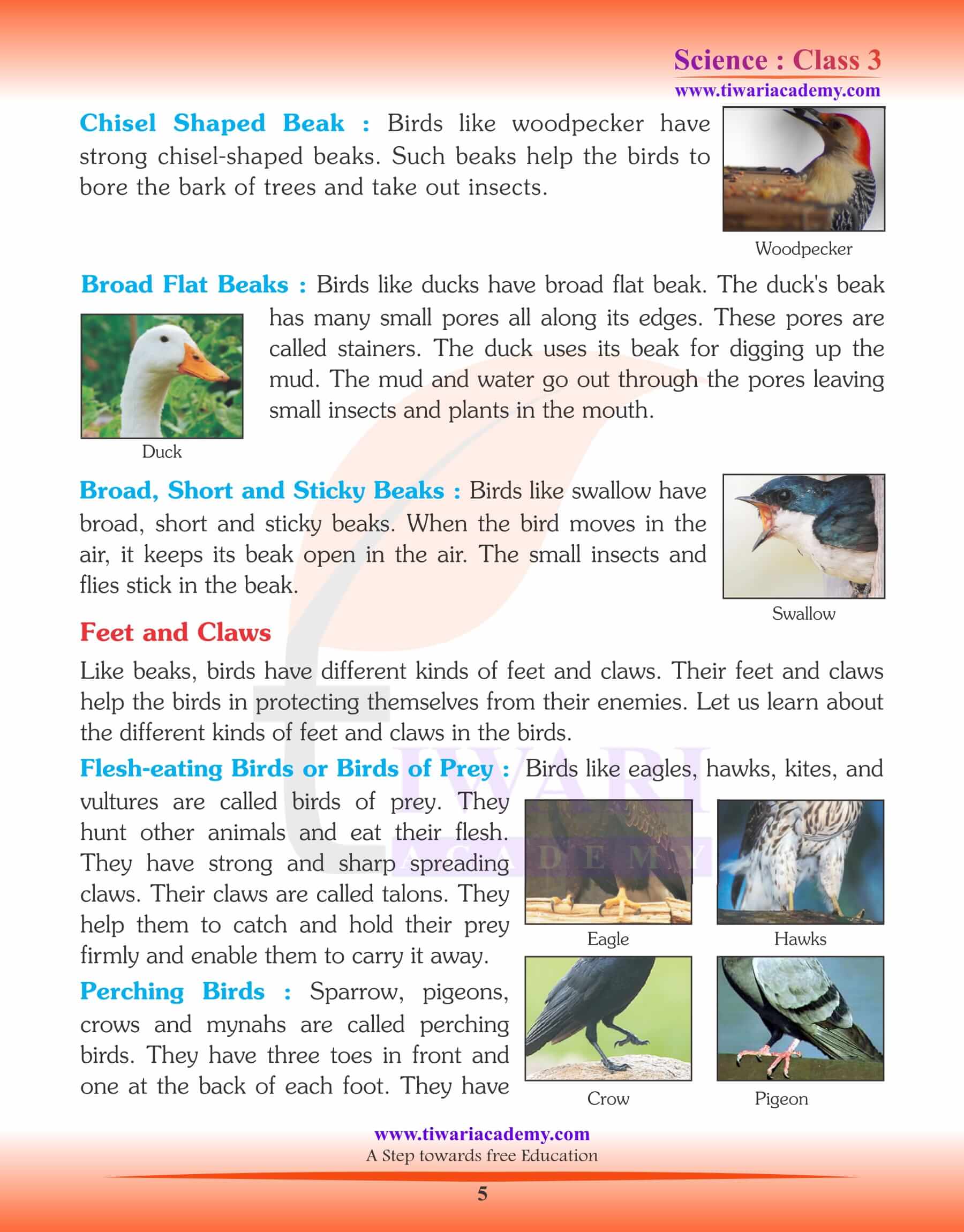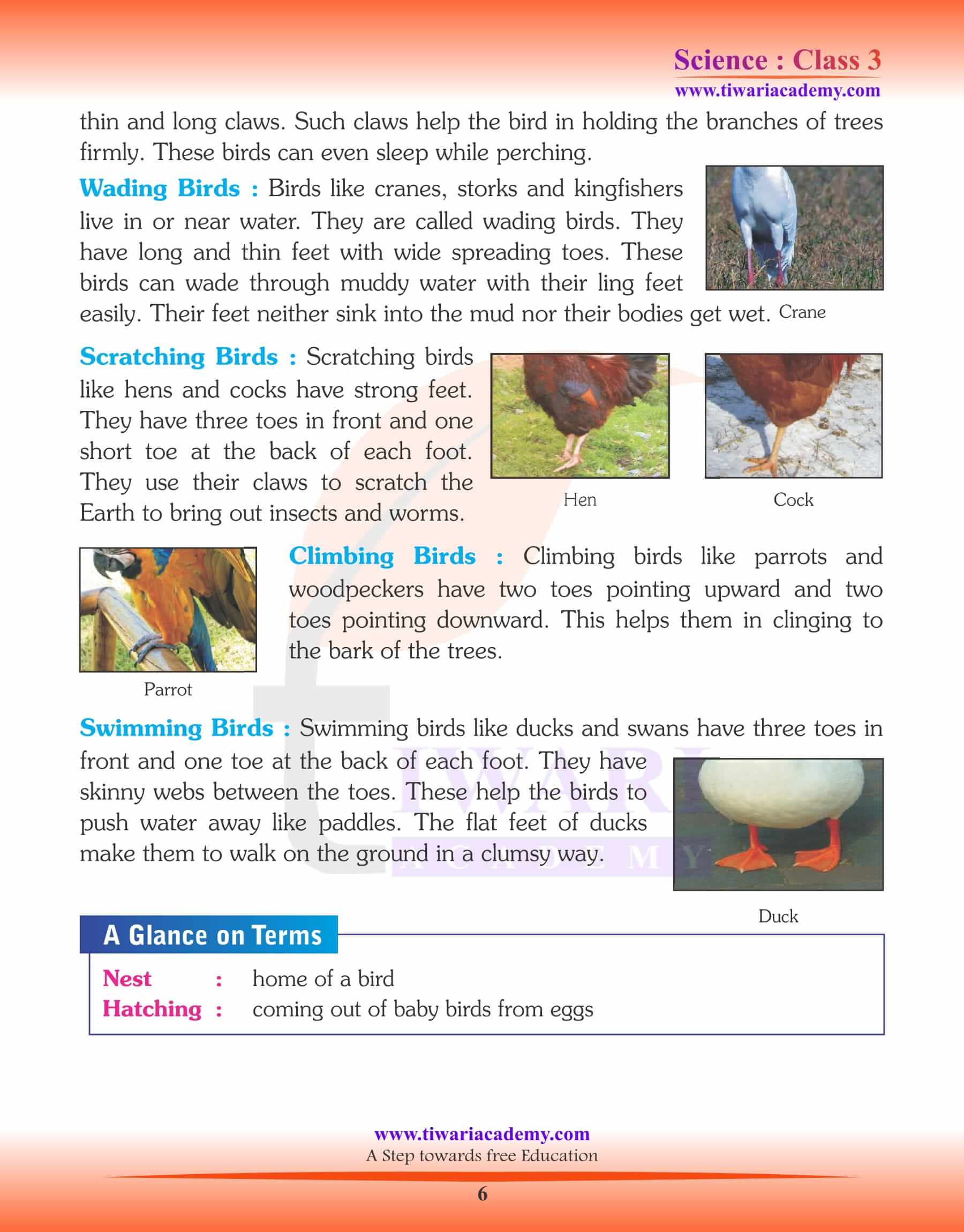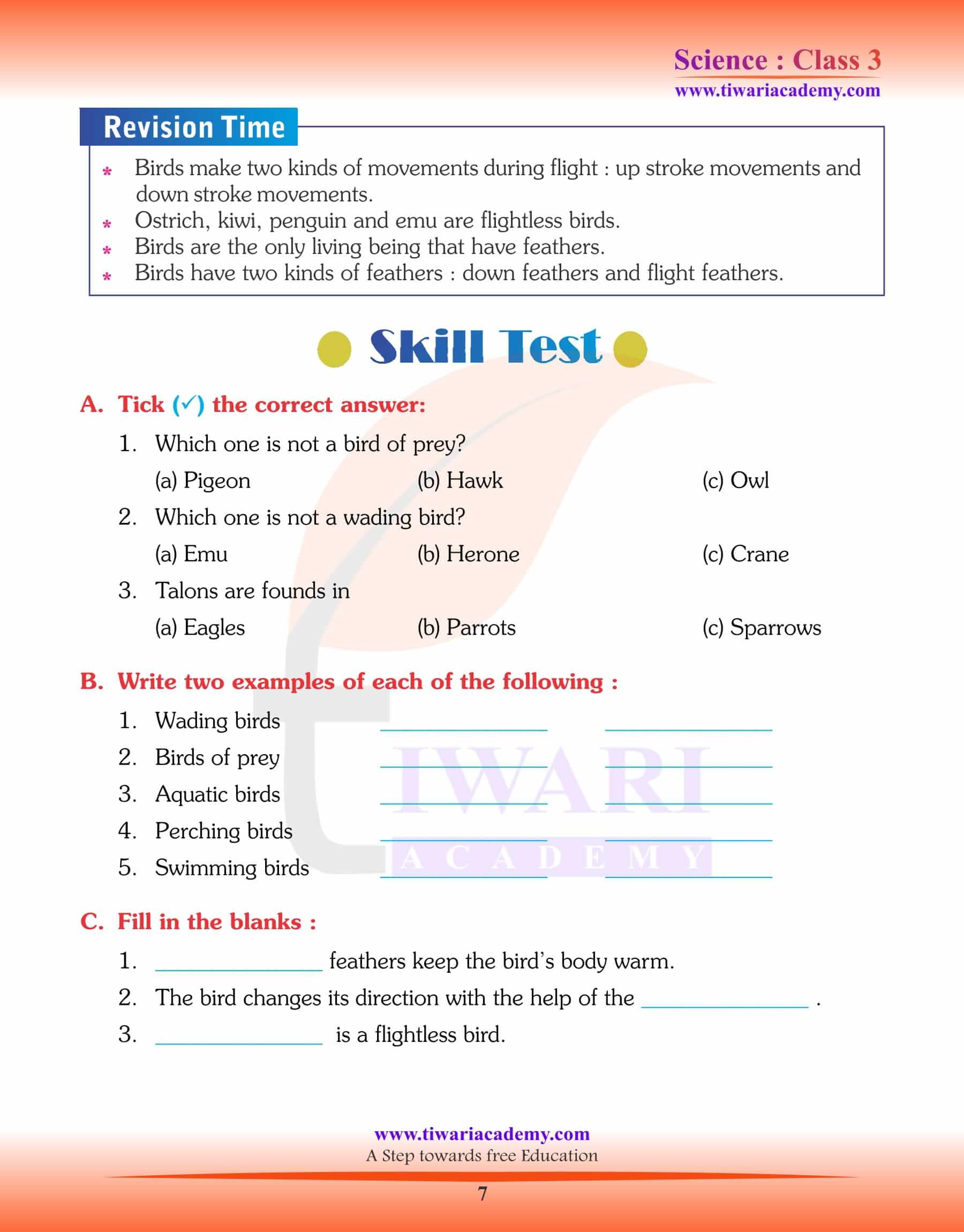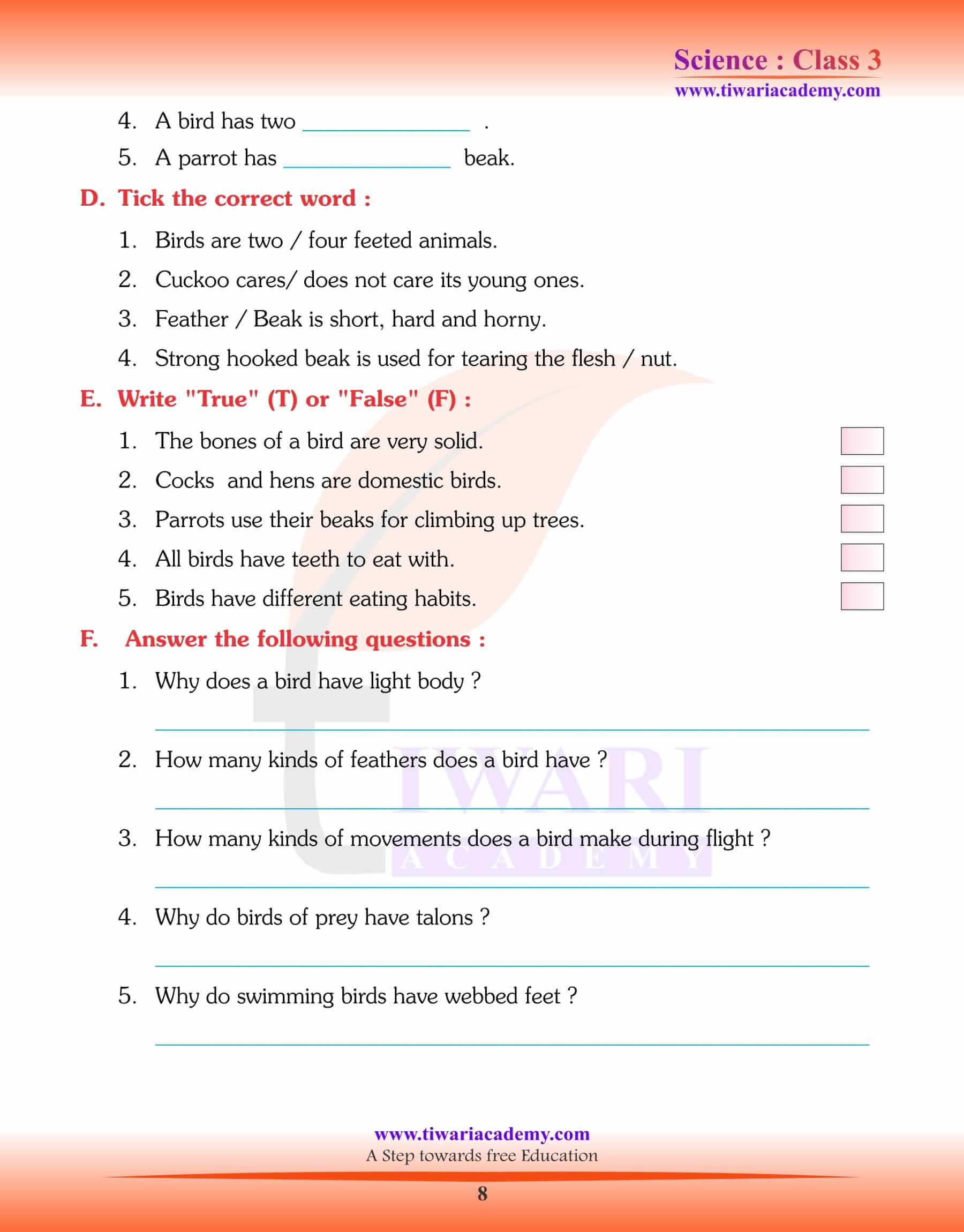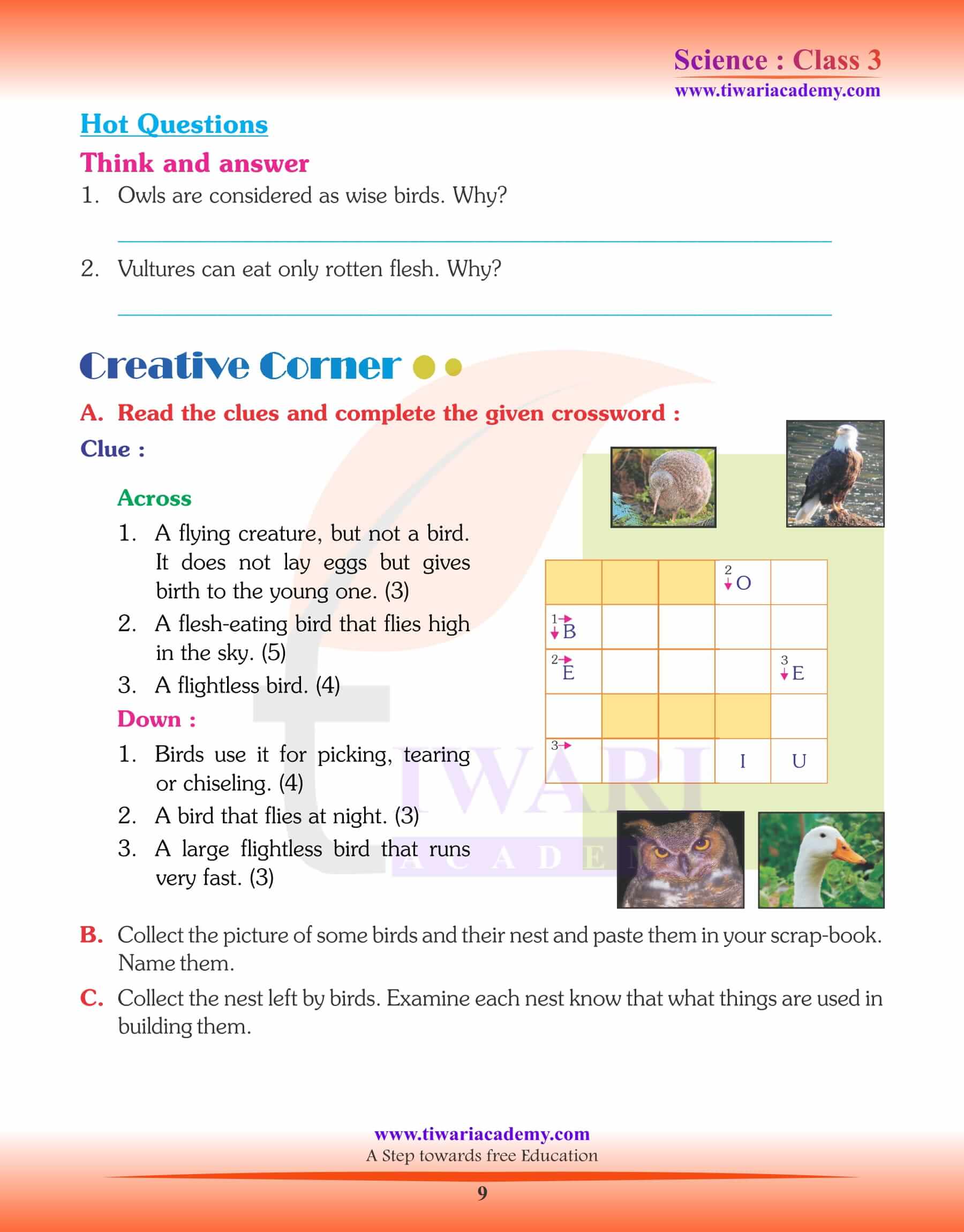NCERT Solutions for Class 3 Science Chapter 3 The World of Birds updated for new academic session 2025-26 free to use online or download it for offline use. In chapter 3 of Class 3 Science, students will learn about the different features of birds that help them to fly. Extra questions for practice are also given here to revise this chapter properly.
Study Material for Class 3 Science Chapter 3
Class 3 Science Chapter 3 The World of Birds
Birds
Birds are wonderful creatures. Birds are most beautiful animals on the Earth. There are many colourful birds around us. Birds have wings and feathers to fly. They have beaks and claws. They use their beaks and claws to catch, hold and eat. We all love to watch them. Human being got the idea of making aeroplanes from the birds.
Special Features of Birds
We know that a bird can fly, while other animals cannot. What makes a bird fly? A bird has many special features that other animals do not have.
1. A bird has very light body. It helps it to remain in the air for long time.
2. The bones of a bird are hollow and filled with air. This makes them light. Though its bones are light but they are very strong.
3. The body of a bird is boat-shaped. This helps it to cut through the air.
4. A bird has two wings. The wings are like its arms. They have feathers that help it to fly in the air.
5. The muscles of a bird are very strong. They help to move the wings up or down, forward or backward. These muscles are called flight muscles.
6. The tail of a bird acts like the rudder of a boat. It helps the bird in changing its direction during flight.
Important Body Parts of a Bird
Like human body-parts birds also have different body-parts as:
1. Feathers
2. Feet and Claws
3. Beak
Feathers of Birds
A bird’s body is covered with small and fluffy feathers. Feathers protect them from heat and cold. Besides, they also help them in flying. There are two types of feathers – down feathers and flight feathers.
Feet and Claws
Birds use their claws to catch their prey and to hold the branches of the tree. They also use their claws to protect themselves from their enemies and to move about.
Beak
Birds generally use their beaks and claws to catch, hold and eat food.
Homes of Birds
Most of the birds make their nests to live in and to lay eggs. Nests also protect them from rough weather and their enemies. Birds make nests using twigs, dry leaves, thread, cotton, wool, feather, pieces of paper and clothes. They make wonderful nests.
Important Points
1. Birds have wings and feathers for flying. Birds also have beaks and claws.
2. They generally use their beaks and claws to watch, hold and eat their food.
3. The beaks of birds are of different types.
4. Birds use their claws to catch their prey and to hold the branches of the tree.
5. Some birds have webbed feet to swim.
6. A bird has hollow bones filled with air.
7. Birds have two types of wing movement– upstroke and downstroke.
8. There are two types of feathers – down feathers and flight feathers.
9. Birds make different types of nests to live in and lay eggs.
Select correct option for given questions:
Which of the following birds has strong, sharp and hooked beak?
Which of the following birds has curved beak?
Fill in the blanks:
1. ______ feathers keep the bird’s body warm.
2. The bird changes its direction with the help of the ______.
3. ________ is a flightless bird.
4. A bird has two ______.
5. A parrot has ______ beak.
Answers:
1. Down
2. Tail
3. Ostrich
4. Feathers
5. dash
Answer the question true and false:
1. Flesh eating birds have strong, sharp and hooked beak.
2. Fruit eating birds have long and slender beak.
3. Perching birds use their feet to hold on to branch of the tree.
4. Down feathers of birds help them in flying.
5. Penguins makes their homes on the ground.
Answers:
1. True
2. false
3. true
4. false
5. true
